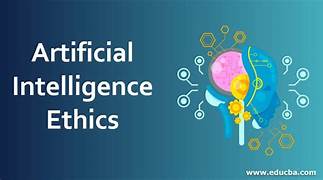Ethical Considerations of AI in Surveillance and Security
Artificial Intelligence (AI) is rapidly transforming the landscape of surveillance and security, offering unprecedented capabilities to monitor, analyze, and predict behaviors. While AI-driven surveillance systems have the potential to enhance public safety, streamline security operations, and reduce human error, they also present significant ethical challenges. The integration of AI in these areas raises questions about privacy, autonomy, bias, accountability, and the potential for misuse. In this article, we will explore the ethical considerations of AI in surveillance and security, examining both the benefits and the concerns associated with its deployment in these domains.
The Role of AI in Surveillance and Security
AI is being increasingly employed in various security and surveillance applications. Facial recognition technology, predictive policing, surveillance drones, and smart surveillance cameras are just a few examples of how AI is being used to monitor public spaces, detect suspicious activities, and even predict potential criminal behavior.
- Facial Recognition: AI systems that can analyze facial features and match them with databases of known individuals are being used for everything from identifying suspects in criminal investigations to controlling access to restricted areas. These systems have raised concerns about privacy and the potential for mass surveillance, especially when they are deployed in public spaces without individuals’ knowledge or consent.
- Predictive Policing: AI algorithms are being used to predict where and when crimes are likely to occur. By analyzing historical crime data, AI can help law enforcement allocate resources more effectively. However, the ethical concerns arise when the algorithms perpetuate biases or result in over-policing certain communities.
- Smart Surveillance Cameras: AI-powered cameras can analyze video footage in real-time, detecting unusual activities or behaviors, such as loitering, aggressive actions, or people entering restricted areas. These cameras can be used in various settings, including airports, malls, and city streets, to enhance public safety.
- Drones and Autonomous Vehicles: AI-powered drones and autonomous vehicles are increasingly being deployed for surveillance purposes, whether to monitor crowds, patrol borders, or track individuals of interest. These technologies can collect large amounts of data from a wide range of sources, raising concerns about how that data is used and who has access to it.
Ethical Issues Surrounding AI in Surveillance and Security
The application of AI in surveillance and security raises several ethical concerns that need to be carefully considered. These concerns revolve around privacy, autonomy, bias, accountability, transparency, and the potential for misuse.
1. Privacy Violations
One of the most significant ethical concerns surrounding AI-powered surveillance systems is the violation of privacy. AI enables the collection and analysis of vast amounts of personal data, much of which may be obtained without the consent of the individuals being monitored. This is particularly concerning in public spaces, where people have little control over how their images, movements, and behaviors are recorded and analyzed.
Facial recognition, in particular, has become a focal point in the debate about privacy. While it can help identify criminals or missing persons, it also raises questions about how facial data is stored, who has access to it, and how it could be used for purposes beyond its original intent. For example, facial recognition could be used to track individuals’ movements across public spaces or to create detailed profiles of people’s activities and habits, leading to an erosion of personal privacy.
Ethical dilemma: How can we balance the need for public safety with individuals’ right to privacy? Is it ethical for governments or organizations to collect personal data without consent if it is for the greater good?
2. Autonomy and Free Will
AI-powered surveillance systems can also infringe upon individuals’ autonomy and freedom. When people know or suspect they are being watched, their behavior may change. This phenomenon, often referred to as the “Panopticon effect,” can lead to self-censorship and conformity. If individuals feel they are constantly being surveilled, they may be less likely to express dissenting opinions, engage in political activism, or take part in other activities that are essential for a free and open society.
Furthermore, the constant presence of surveillance can erode a sense of personal agency, as individuals may begin to feel that they are always under scrutiny and that their every move is being analyzed by an AI system. This can lead to a loss of autonomy in both private and public spheres, as individuals become increasingly aware of the AI systems that are monitoring their actions.
Ethical dilemma: To what extent can AI surveillance systems be justified when they may limit individuals’ ability to act freely and authentically? How do we balance security with freedom?
3. Bias and Discrimination
AI systems are only as good as the data they are trained on. If AI algorithms are trained on biased data, they can perpetuate and even amplify these biases, leading to unfair outcomes. This is particularly concerning in surveillance and security applications, where biased AI systems can disproportionately target certain groups of people.
For example, facial recognition systems have been shown to have higher error rates for people of color and women, leading to a higher likelihood of misidentification. Similarly, predictive policing algorithms often rely on historical crime data, which may reflect biases in policing practices, such as over-policing certain neighborhoods. As a result, these systems can reinforce systemic inequalities, disproportionately impacting marginalized communities.
Ethical dilemma: How do we ensure that AI systems used in surveillance and security do not perpetuate existing biases and inequalities? Can we trust AI to make fair and unbiased decisions when it is trained on biased data?
4. Accountability and Transparency
As AI systems take on a more significant role in surveillance and security, determining accountability for their actions becomes increasingly complex. If an AI system makes a mistake—such as misidentifying an innocent person as a criminal—who is responsible for the consequences? Is it the developers who created the algorithm, the agencies or organizations that deploy the technology, or the AI system itself?
Lack of transparency in AI systems further complicates accountability. Many AI algorithms, particularly those based on deep learning, operate as “black boxes,” meaning that even their creators may not fully understand how they make decisions. This lack of transparency makes it difficult for individuals to challenge or contest decisions made by AI systems, such as being flagged by facial recognition software or being subjected to unnecessary surveillance.
Ethical dilemma: How can we ensure that there is accountability for the actions of AI systems, particularly when mistakes are made or harm occurs? Should AI developers and users be held responsible for the decisions made by their systems?
5. The Potential for Misuse
AI systems designed for surveillance and security can be easily misused by governments, corporations, or other entities with harmful intentions. For example, authoritarian regimes may use AI-powered surveillance to suppress dissent, monitor political opposition, or stifle free speech. Corporations may use AI to collect and analyze personal data for profit, without regard for individuals’ privacy rights.
The potential for misuse is particularly concerning when AI systems are used for mass surveillance, as it can lead to widespread monitoring of entire populations. In such cases, the line between protecting national security and violating human rights becomes blurred, and the risk of authoritarian control increases.
Ethical dilemma: How can we prevent AI-powered surveillance systems from being used for purposes that violate human rights or undermine democratic principles? What safeguards should be in place to protect against the misuse of AI?
Moving Forward: Striking a Balance
While AI in surveillance and security offers numerous benefits, it is clear that its deployment must be carefully considered and regulated. The ethical challenges highlighted above require thoughtful, proactive measures to ensure that AI is used responsibly and in a way that aligns with societal values.
- Regulation and Oversight: Governments and regulatory bodies must establish clear laws and standards for the use of AI in surveillance. These regulations should address issues such as data privacy, transparency, accountability, and bias, and ensure that AI systems are used in ways that respect human rights and democratic principles.
- Transparency and Accountability: AI systems used in surveillance and security should be transparent, with clear explanations of how they work, what data they use, and how decisions are made. Developers and users of AI systems must be held accountable for the outcomes of these systems, particularly when harm is caused.
- Bias Mitigation: Efforts must be made to eliminate bias from AI systems used in surveillance and security. This includes using diverse and representative datasets, regularly auditing algorithms for fairness, and ensuring that AI systems are designed to treat all individuals equally.
- Public Involvement: Public engagement and debate are essential in shaping the ethical frameworks surrounding AI surveillance. Communities must have a voice in decisions about how AI is used in their neighborhoods and workplaces, and their concerns must be taken seriously.
- Balancing Security and Privacy: Finally, a balance must be struck between ensuring security and protecting privacy. Surveillance should not come at the expense of individual freedoms, and AI should be used in a way that enhances public safety without infringing on people’s rights.
Conclusion
AI’s role in surveillance and security presents both significant opportunities and complex ethical challenges. While AI can enhance safety, reduce human error, and predict threats, its use must be carefully balanced with respect for privacy, autonomy, and human rights. By addressing issues of bias, accountability, transparency, and the potential for misuse, we can ensure that AI in surveillance serves the public good without compromising the ethical principles that underpin a free and just society. Only through careful oversight, regulation, and public discourse can we navigate the ethical considerations of AI in surveillance and security and create a future where technology enhances, rather than diminishes, our freedoms.


